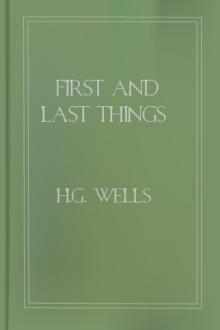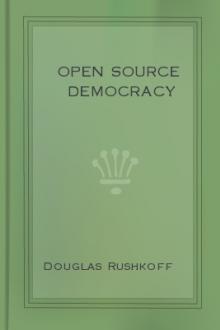The Library, Andrew Lang [online e book reading txt] 📗

- Author: Andrew Lang
- Performer: -
Book online «The Library, Andrew Lang [online e book reading txt] 📗». Author Andrew Lang
Rowlandson, one of the earliest, was a caricaturist of inexhaustible facility, and an artist who scarcely did justice to his own powers.
He illustrated several books, but he is chiefly remembered in this way by his plates to Combe’s “Three Tours of Dr. Syntax.” Gillray, his contemporary, whose bias was political rather than social, is said to have illustrated “The Deserted Village” in his youth; but he is not famous as a book-illustrator. Another of the early men was Bunbury, whom “quality”-loving Mr. Walpole calls “the second Hogarth, and first imitator who ever fully equalled his original (!);” but whose prints to “Tristram Shandy,” are nevertheless completely forgotten, while, if he be remembered at all, it is by the plate of “The Long Minuet,” and the vulgar “Directions to Bad Horsemen.” With the first years of the century, however, appears the great master of modern humorists, whose long life ended only a few years since, “the veteran George Cruikshank”—as his admirers were wont to style him. He indeed may justly be compared to Hogarth, since, in tragic power and intensity he occasionally comes nearer to him than any artist of our time. It is manifestly impossible to mention here all the more important efforts of this indefatigable worker, from those far-away days when he caricatured “Boney” and championed Queen Caroline, to that final frontispiece for “The Rose and the Lily”—“designed and etched (according to the inscription) by George Cruikshank, age 83;” but the plates to the “Points of Humour,” to Grimm’s “Goblins,” to “Oliver Twist,” “Jack Sheppard,” Maxwell’s “Irish Rebellion,” and the “Table Book,” are sufficiently favourable and varied specimens of his skill with the needle, while the woodcuts to “Three Courses and a Dessert,” one of which is here given, are equally good examples of his work on the block. The “Triumph of Cupid,” which begins the “Table Book,” is an excellent instance of his lavish wealth of fancy, and it contains beside, one—nay more than one—of the many portraits of the artist.
He is shown en robe de chambre, smoking (this was before his regenerate days!) in front of a blazing fire, with a pet spaniel on his knee. In the cloud which curls from his lips is a motley procession of sailors, sweeps, jockeys, Greenwich pensioners, Jew clothesmen, flunkies, and others more illustrious, chained to the chariot wheels of Cupid, who, preceded by cherubic acolytes and banner-bearers, winds round the top of the picture towards an altar of Hymen on the table. When, by the aid of a pocket-glass, one has mastered these swarming figures, as well as those in the foreground, it gradually dawns upon one that all the furniture is strangely vitalised. Masks laugh round the border of the tablecloth, the markings of the mantelpiece resolve themselves into rows of madly-racing figures, the tongs leers in a degage and cavalier way at the artist, the shovel and poker grin in sympathy; there are faces in the smoke, in the fire, in the fireplace,—the very fender itself is a ring of fantastic creatures who jubilantly hem in the ashes. And it is not only in the grotesque and fanciful that Cruikshank excels; he is master of the strange, the supernatural, and the terrible. In range of character (the comparison is probably a hackneyed one), both by his gifts and his limitations, he resembles Dickens; and had he illustrated more of that writer’s works the resemblance would probably have been more evident. In “Oliver Twist,” for example, where Dickens is strong, Cruikshank is strong; where Dickens is weak, he is weak too. His Fagin, his Bill Sikes, his Bumble, and their following, are on a level with Dickens’s conceptions; his Monk and Rose Maylie are as poor as the originals. But as the defects of Dickens are overbalanced by his merits, so Cruikshank’s strength is far in excess of his weakness. It is not to his melodramatic heroes or wasp-waisted heroines that we must look for his triumphs; it is to his delineations, from the moralist’s point of view, of vulgarity and vice,—of the “rank life of towns,” with all its squalid tragedy and comedy. Here he finds his strongest ground, and possibly, notwithstanding his powers as a comic artist and caricaturist, his loftiest claim to recollection.
Cruikshank was employed on two only of Dickens’s books—“Oliver Twist” and the “Sketches by Boz.” {13} The great majority of them were illustrated by Hablot K. Browne, an artist who followed the ill-fated Seymour on the “Pickwick Papers.” To “Phiz,” as he is popularly called, we are indebted for our pictorial ideas of Sam Weller, Mrs. Gamp, Captain Cuttle, and most of the author’s characters, down to the “Tale of Two Cities.” “Phiz” also illustrated a great many of Lever’s novels, for which his skill in hunting and other Lever-like scenes especially qualified him.
With the name of Richard Doyle we come to the first of a group of artists whose main work was, or is still, done for the time-honoured miscellany of Mr. Punch. So familiar an object is “Punch” upon our tables, that one is sometimes apt to forget how unfailing, and how good on the whole, is the work we take so complacently as a matter of course. And of this good work, in the earlier days, a large proportion was done by Mr. Doyle. He is still living, although he has long ceased to gladden those sprightly pages. But it was to “Punch” that he contributed his masterpiece, the “Manners and Customs of ye Englyshe,” a series of outlines illustrating social life in 1849, and cleverly commented by a shadowy “Mr. Pips,” a sort of fetch or double of the bustling and garrulous old Caroline diarist. In these captivating pictures the life of thirty years ago is indeed, as the title-page has it, “drawn from ye quick.” We see the Molesworths and Cantilupes of the day parading the Park; we watch Brougham fretting at a hearing in the Lords, or Peel holding forth to the Commons (where the Irish members are already obstructive); we squeeze in at the Haymarket to listen to Jenny Lind, or we run down the river to Greenwich Fair, and visit “Mr.
Richardson, his show.” Many years after, in the “Bird’s Eye Views of Society,” which appeared in the early numbers of the “Cornhill Magazine,” Mr. Doyle returned to this attractive theme. But the later designs were more elaborate, and not equally fortunate. They bear the same relationship to Mr. Pips’s pictorial chronicle, as the laboured “Temperance Fairy Tales” of Cruikshank’s old age bear to the little-worked Grimm’s “Goblins” of his youth. So hazardous is the attempt to repeat an old success! Nevertheless, many of the initial letters to the “Bird’s Eye Views” are in the artist’s best and most frolicsome manner. “The Foreign Tour of Brown, Jones, and Robinson” is another of his happy thoughts for “Punch;” and some of his most popular designs are to be found in Thackeray’s “Newcomes,”
where his satire and fancy seem thoroughly suited to his text. He has also illustrated Locker’s well-known “London Lyrics,” Ruskin’s “King of the Golden River,” and Hughes’s “Scouring of the White Horse,” from which last the initial at the beginning of this chapter has been borrowed. His latest important effort was the series of drawings called “In Fairy Land,” to which Mr. William Allingham contributed the verses.
In speaking of the “Newcomes,” one is reminded that its illustrious author was himself a “Punch” artist, and would probably have been a designer alone, had it not been decreed “that he should paint in colours which will never crack and never need restoration.”
Everyone knows the story of the rejected illustrator of “Pickwick,”
whom that and other rebuffs drove permanently to letters. To his death, however, he clung fondly to his pencil. In technique he never attained to certainty or strength, and his genius was too quick and creative—perhaps also too desultory—for finished work, while he was always indifferent to costume and accessory. But many of his sketches for “Vanity Fair,” for “Pendennis,” for “The Virginians,” for “The Rose and the Ring,” the Christmas books, and the posthumously published “Orphan of Pimlico,” have a vigour of impromptu, and a happy suggestiveness which is better than correct drawing. Often the realisation is almost photographic. Look, for example, at the portrait in “Pendennis” of the dilapidated Major as he crawls downstairs in the dawn after the ball at Gaunt House, and then listen to the inimitable context: “That admirable and devoted Major above all,—who had been for hours by Lady Clavering’s side ministering to her and feeding her body with everything that was nice, and her ear with everything that was sweet and flattering—oh!
what an object he was! The rings round his eyes were of the colour of bistre; those orbs themselves were like the plovers’ eggs whereof Lady Clavering and Blanche had each tasted; the wrinkles in his old face were furrowed in deep gashes; and a silver stubble, like an elderly morning dew, was glittering on his chin, and alongside the dyed whiskers, now limp and out of curl.” A good deal of this—that fine touch in italics especially—could not possibly be rendered in black and white, and yet how much is indicated, and how thoroughly the whole is felt! One turns to the woodcut from the words, and back again to the words from the woodcut with ever-increasing gratification. Then again, Thackeray’s little initial letters are charmingly arch and playful. They seem to throw a shy side-light upon the text, giving, as it were, an additional and confidential hint of the working of the author’s mind. To those who, with the present writer, love every tiny scratch and quirk and flourish of the Master’s hand, these small but priceless memorials are far beyond the frigid appraising of academics and schools of art.
After Doyle and Thackeray come a couple of well-known artists—John Leech and John Tenniel. The latter still lives (may he long live!) to delight and instruct us. Of the former, whose genial and manly “Pictures of Life and Character” are in every home where good-humoured raillery is prized and appreciated, it is scarcely necessary to speak. Who does not remember the splendid languid swells, the bright-eyed rosy girls (“with no nonsense about them!”) in pork pie hats and crinolines, the superlative “Jeames’s,” the hairy “Mossoos,” the music-grinding Italian desperadoes whom their kind creator hated so? And then the intrepidity of “Mr. Briggs,”
the Roman rule of “Paterfamilias,” the vagaries of the “Rising Generation!” There are things in this gallery over which the severest misanthrope must chuckle—they are simply irresistible.
Let any one take, say that smallest sketch of the hapless mortal who has turned on the hot water in the bath and cannot turn it off again, and see if he is able to restrain his laughter. In this one gift of producing instant mirth Leech is almost alone. It would be easy to assail his manner and his skill, but for sheer fun, for the invention of downright humorous situation, he is unapproached, except by Cruikshank. He did a few illustrations to Dickens’s Christmas books; but his best-known book-illustrations properly so called are to “Uncle Tom’s Cabin,” the “Comic Histories” of A’Beckett, the “Little Tour in Ireland,” and certain sporting novels by the late Mr. Surtees. Tenniel now confines himself almost exclusively to the weekly cartoons with which his name is popularly associated. But years ago he used to invent the most daintily fanciful initial letters; and many of his admirers prefer the serio-grotesque designs of “Punch’s Pocket-Book,” “Alice in Wonderland,”
and “Through





Comments (0)